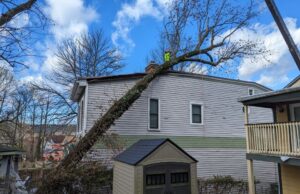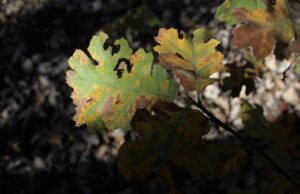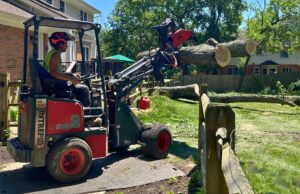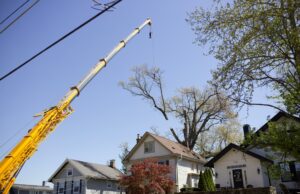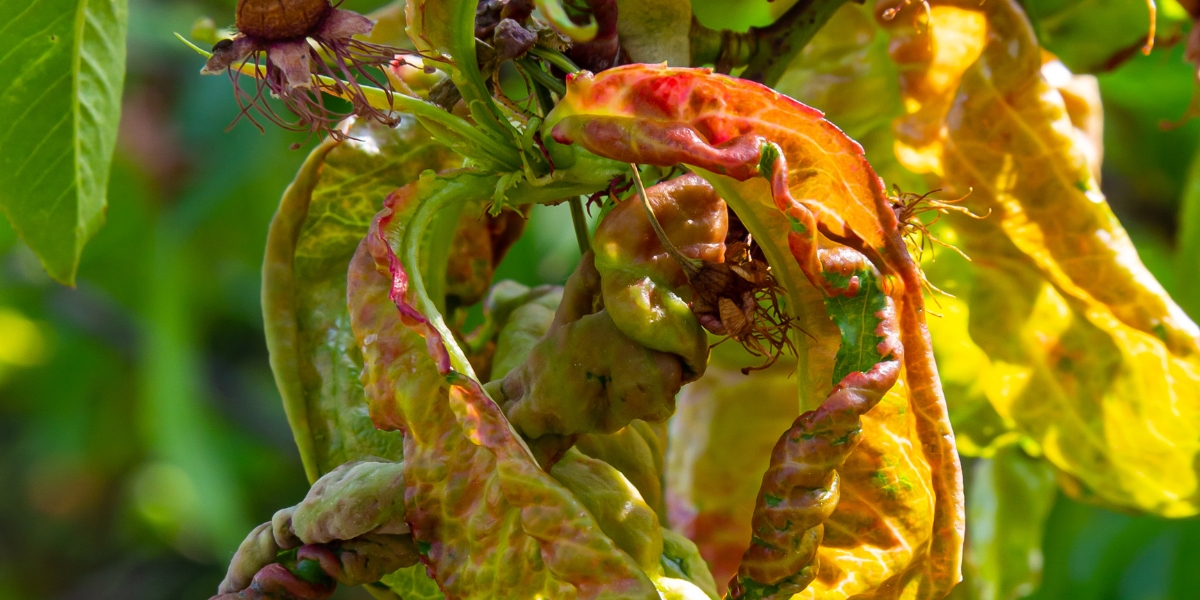As summer heats up in Cincinnati, your trees face unique challenges. At Lefke Tree Experts, we understand that proper summer tree care is essential for maintaining a healthy, beautiful landscape. Without adequate attention, trees can suffer from heat stress, drought, pest infestations, and diseases. These issues can lead to stunted growth, damaged foliage, or in severe cases, tree mortality.
For Cincinnati property owners, recognizing these summer-specific challenges is the first step in ensuring your trees stay healthy throughout the hottest months. By implementing targeted tree care strategies, you can prevent many common problems that might otherwise result in weakened trees, potential property damage, or even tree loss.
Healthy trees do more than beautify your property – they provide invaluable shade and contribute to improved air quality. In this article, we’ll share practical, expert-backed tips to help your trees not just survive but flourish this summer. With the right care, you’ll be able to enjoy the benefits of your trees for years to come.
Common Problems Cincinnati Trees Face During Summer
Cincinnati summers bring a set of challenges that can affect the health and long-term survival of our local trees. The combination of soaring temperatures, unpredictable rainfall patterns, and a surge in pest activity creates a demanding environment for trees. By understanding what your trees are up against, you can take timely, effective steps to protect them. This proactive approach not only helps your trees weather the summer months but also contributes to their overall vigor and lifespan.
Heat Stress
Prolonged exposure to high temperatures can cause trees to become stressed, leading to wilting, leaf drop, and reduced growth. Heat stress weakens trees, making them more susceptible to diseases and pest infestations.
Drought Stress
Cincinnati summers often bring periods with little rainfall, depriving trees of essential moisture. This drought stress can cause leaves to brown and drop prematurely, and in severe cases, can lead to dead or dying trees. Prolonged drought and excessive heat can also make trees brittle, increasing the risk of sudden large branch failure in both summer and winter.
Pests and Diseases
Warm weather increases the activity of pests like emerald ash borers and Japanese beetles, as well as the spread of fungal diseases. These pests and diseases can cause significant damage, weakening trees and, if left untreated, can even kill affected trees.
Soil Compaction
Heavy foot traffic and outdoor activities can lead to compacted soil, which restricts root growth and reduces water and nutrient absorption. Compacted soil can also create a hostile environment for beneficial microorganisms that support tree health.
Nutrient Deficiencies
Nutrient shortages in trees aren’t just a summer issue, but the hot months can make them worse. When trees are already struggling with heat and lack of water, plus dealing with bugs, they become weaker. If your trees were already low on nutrients, these summer stresses can hit them even harder.
You might notice these signs of nutrient problems in your trees: leaves turning yellow, slow growth, or trees that generally seem “off” in terms of overall vigor and/or color. When trees don’t have the nutrients they need, they’re less able to fight off problems like pests and diseases.
How to Keep Your Cincinnati Trees Thriving This Summer
Keeping your trees healthy during Cincinnati’s hot summers requires some targeted care. With the right approach, you can help your trees not just survive, but stay strong and healthy even when the heat is on. Here are some practical steps you can take to support your trees through the toughest months of the year.
1. Smart Watering Strategies
Getting your watering right is key to keeping trees healthy during Cincinnati summers. Trees need plenty of moisture to handle the high heat and intense sun, as well as to support their growth. But it’s not just about how much water you give them – it’s about how and when you do it.
Temperature Affects Water Needs
Keep an eye on the temperature. It’s best to water your trees when it’s cooler than 90°F. When it gets hotter than that, trees can enter a form of dormancy, reducing their water uptake as a survival tactic. If it hits 100°F, they might shut down completely. A good trick is to water your trees both before and after a heat wave. This helps them stay hydrated even on the hottest days.
The Best Way to Water Your Trees in Summer
When it comes to watering trees, think “deep and not often.” This approach encourages roots to grow deeper, which helps trees find water even when it’s dry. Quick, shallow watering doesn’t do much good, – the water doesn’t reach the deeper roots where it’s really needed.
If you don’t want to stand out in the heat with a hose, try using a soaker hose. These are simple tools that slowly soak the soil, ensuring deep penetration.
The best times to water are early in the morning or late in the evening. This way, less water evaporates, and more of it gets to where the trees need it – their roots.
2. Mulch Your Trees and Shrubs
Mulching is an effective way to help trees retain moisture, regulate soil temperature, and reduce weed competition during the summer. Mulch helps the soil retain moisture, keeping tree roots hydrated and cool, even during the hottest days. Proper mulching can significantly enhance tree vitality during the summer months.
To help your trees thrive this summer, apply a 2–4-inch layer of organic mulch around the base of the tree. Choose mulch such as:
- Wood chips
- Shredded bark
- Pine needles
- Leaf litter and grass clippings
Avoid using an inorganic mulch around your trees, like gravel or rubber. These don’t provide the same moisture and temperature regulation benefits and can actually make summer tree problems worse.
How to Apply Mulch Around Your Trees
- Leave a gap between the mulch and the tree trunk to prevent rot and pest infestations. Never pile mulch up against the trunk.
- Ideally, mulch under the entire tree, extending at least to the drip line, as tree roots can spread well beyond the canopy (depending on the surrounding area and the space roots have to grow).
- If you can’t go that far, extend the mulch at least 2-3 feet from the trunk.
3. Prune and Trim Where Necessary
While the best time to prune trees in the Cincinnati area is during late winter to early spring, there are instances when summer pruning is necessary.
Removing dead or diseased branches during the summer can prevent the spread of disease and improve the tree’s overall health. Additionally, light pruning to increase airflow within the canopy can help reduce the risk of fungal infections and pest infestations.
Just make sure to use clean, sharp tools to make precise cuts just above the branch collar to minimize wounding. And avoid heavy pruning during the summer to minimize stress on the tree. Or, for best results, have our local arborists inspect your trees and professionally prune them where necessary to give your trees the best chance of thriving this summer and into the cooler months.
4. Fight Back Against Pests and Diseases
One of the biggest threats your trees face during a Cincinnati summer is the increased activity of pests and diseases. Warm weather can lead to infestations by pests like:
- Emerald ash borers
- Japanese beetles
- Aphids
- Spider mites
- Scale insects
Summer also means fungal diseases are spreading, such as:
- Powdery mildew
- Anthracnose
- Leaf spot
- Rust
- Verticillium wilt
That’s a lot of bad news for property owners who value the health and appearance of their trees. The most important thing you can do to prevent extensive pest damage is to inspect your trees regularly and act as soon as you notice something is wrong.
Prevention is Better Than Treatment
The best way to keep your trees healthy is to prevent diseases and pest infestations in the first place. Anything that reduces tree stress, such as proper watering, mulching, and pruning, will make them less vulnerable. And do not move firewood, as this is how countless pests are spread to new areas.
If a tree suffers severe damage from pests or diseases, have the affected branches pruned off. If the damage is extensive and cannot be corrected, have a local arborist cut down and remove the tree to prevent the problems from spreading to other trees.
5. Nurture Your Soil for Healthier Trees
Good soil is the foundation for healthy trees, especially during tough summer months. Healthy soil provides a stable, nutrient-rich environment for trees, helping them to better overcome summertime stressors like drought.
Here are some practical ways to boost your soil’s health:
- Use Organic Mulch: Not only does mulch retain moisture and regulate soil temperature, but organic mulch also breaks down over time, feeding the soil and improving its structure.
- Add Compost: Mix some compost into your soil. It’s packed with nutrients and helps build up the beneficial microbes in your soil. These tiny helpers break down organic matter and make nutrients more available to your trees.
- Don’t Over-Water: Proper watering techniques are important for soil health too. Overwatering can waterlog your soil, which isn’t good for tree roots. Proper watering encourages roots to grow deeper, which is great for your trees’ long-term health.
- Use Nitrogen-Fixing Plants: Consider adding nitrogen-fixing plants that work with your
trees to improve the soil. Plants like lupines, red and white clover, and hairy vetch are great at fixing nitrogen in the soil. This means they take nitrogen from the air and make it available in the soil for your trees. These plants also help prevent soil erosion and improve soil structure.
By taking care of your soil, you’re giving your trees the best possible environment to thrive, even when the summer heat is at its worst.
Don’t Rely on Fertilizers: While fertilization provides short-term access to nutrients, it can stress trees by forcing growth at the wrong time, such as mid-to-late summer when trees are preparing to shed leaves in the fall and go dormant shortly thereafter. Improving soil health is a more effective and sustainable approach for supporting trees through summer stressors and promoting their long-term well-being.
Additional Tree Care Tips for Hot Summer Days in Cincinnati
The above tips are some of the most important things you can do to protect your trees during the hot, dry days of summer here in Cincinnati. But if you want to take your personal tree care to the next level, here are a few extra tips:
- Shield Sensitive Trees: Use shade cloths or temporary barriers to protect young or delicate trees from intense sun and strong winds.
- Check Soil Regularly: Regularly test your soil to make sure the pH and nutrients are right for your trees.
- Plant Smart: When adding new trees, choose spots where they’ll thrive. Good placement helps avoid many of the common tree problems we see in Cincinnati.
- Use Native Trees: Choose native trees that naturally grow in our area. They’re built to handle our local weather and usually grow stronger.
- Watch Your Step: Be careful about walking or using heavy equipment near tree roots. This can pack down the soil, making it hard for roots to grow and absorb water. Although dry summer soil is less prone to compaction than wet winter soil, it’s always a good idea to do as little damage as possible, regardless of the time of year.
These tips, along with the basics we covered earlier, will help your trees stay healthy through Cincinnati’s summers. If you need more advice, don’t hesitate to reach out to us at Lefke Tree Experts.
Let’s Keep Your Trees Healthy This Summer
Summer can be tough on trees. Without proper care, you might see severe wilting, early leaf drop, or even dying branches. But with the right approach, your trees can thrive through the hot months and be ready for fall and winter.
Need a hand? At Lefke Tree Experts, we’re here to help. Whether it’s summer pruning or removing a weak tree, we’ve got you covered. Our team knows Cincinnati trees inside and out.
If you’re ready for healthier, stronger trees, call us at 513-325-1783 or get an estimate online. We’ll help keep your trees in top shape all year round.

